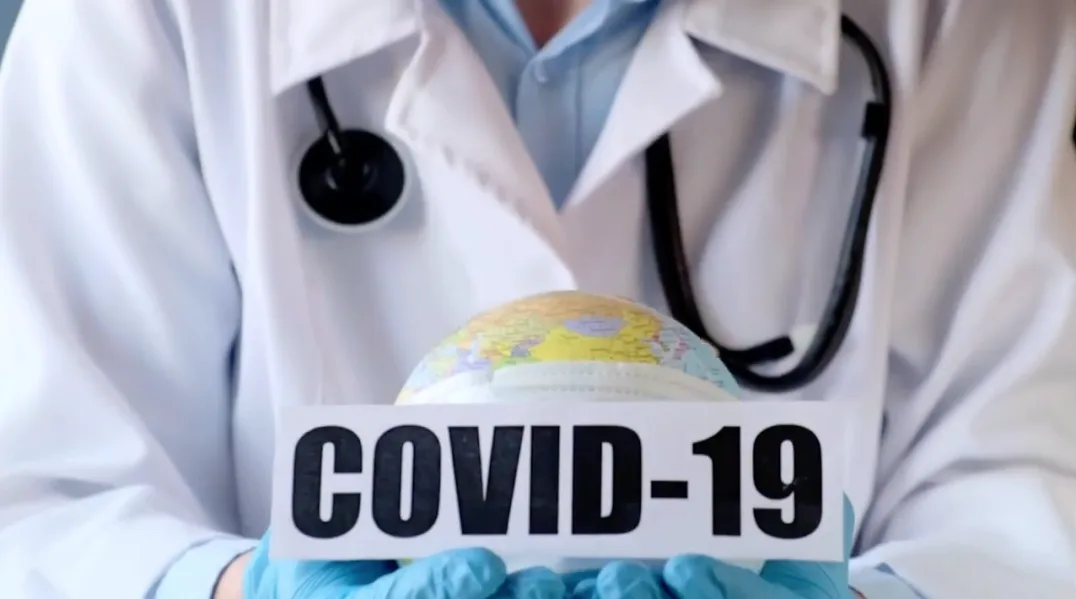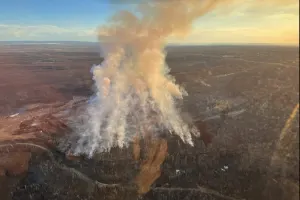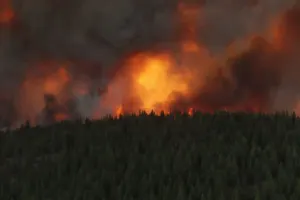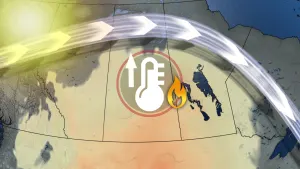
‘Health and climate are not separate from one another’, here's why
Understanding how climate and health might impact one another
Thousands of deaths worldwide, a devastating blow to global economies, nearly half of all Canadians have lost work, and it isn't slowing down yet.
The coronavirus, or COVID19 is a global pandemic that has caused global panic, but could this epidemic be connected to another global epidemic known as climate change?
If you take a look at the World Health Organization's (WHO) website, air pollution and climate change, as well as the global influenza pandemic, were among the top threats to global health in 2019. And now scientists and doctors believe there might be a connection between the changing climate and infectious diseases.
Dr. Courtney Howard is an Emergency Physician in Yellowknife and board president president of the Canadian Association of Physicians for the Environment and spends a lot of her time working on climate related health impacts.
"There is certainly no proven link between climate change and what we have seen with COVID-19 now, but there is certainly a potential for climate change to make other similar pandemics more likely, " says Dr. Howard.
Go HERE for our complete coverage of the COVID-19 pandemic
Howard explains that if we take a look at how COVID-19 started we can begin to understand how one might impact the other.
"COVID-19 is happening as a result of the transmission of an infection from an animal to a human, and that, according to the best of our knowledge, happened at a seafood market in China,” she says. “So it was this interface between humans and the rest of the natural world. Red flags have actually been put up before to sound the alarm saying hey that might not be the best way to interact with the natural world because there are all sorts of animals in close proximity there and we know that those are the conditions where transmissions can occur."
So how does climate change play into all of this?
As we see the world warming we are seeing animals being forced to migrate to different climates to survive. Disease carrying insects are finding new homes, polar bears are in search of longer lasting ice, and moose are being forced further north to survive ticks. In fact Dr. Howard tells us Elders in Yellowknife have been noticing animals like skunks and beavers in places they have never been before. As these animals are forced to change their habitat, there is a greater possibility of interaction with other species they aren't used to or with humans.
"Climate change as we have seen in the North results in animals in entirely different places then they used to be and that is a place where we can end up with an unproductive and unpredictable transition of a virus to a human," says Dr. Howard.
WATCH BELOW: COVID-19 COULD KICK-START A GREEN RENAISSANCE -- OR STUNT IT
Another issue that is related to climate change and can create an unnatural and dangerous interaction between different species is deforestation.
Back in 1998, a deadly novel paramyxovirus known as Nipah Virus was discovered in Malaysia. Four years later, the University of Malaya did a study on how this virus started and believe it all began as a result of deforestation in Indonesia, which forced fruit bats to fly elsewhere to find food and also transporting a deadly disease.
"When we look at the other ways humans can be brought into close contact with the rest of the natural world, habitat destruction also falls into that,” Dr Howard explains. “So when we look at Amazon forest destruction or other places where habitat is being changed as a result of industrial activities, there are different places in Canada where that is happening as well those are all places where animals and humans could easily come into contact and have these types of transmissions of viruses."
Those are just a few ways viruses could spread as a result of the changing climate on the surface, but Dr. Howard adds we also have to be concerned about what is going on below us.
"There is also a concern about ancient viruses that may be released by the melting of permafrost and that is another risk we don't have a handle on right now."
On top of opening the door for more infectious diseases to form, the pollution that creates climate change also makes it harder for people to fight off these viruses.
"A lot of climate change as we know is driven by the burning of fossil fuels. That burning also creates air pollution,” says Dr. Howard. “The World Health Organization quotes 7 million people as having air pollution be a part of why they die every single year. When people already have inflammation in their lungs because of air pollution from transport or coal burning power plants or other causes makes one more vulnerable when another challenge arrives for them to cope with like COVID-19."
So what can we do?
COVID-19 is on a very different timeline than climate change, and so scientists and doctors around the world are working together to try and find a vaccine. Dr. Howard is hoping we will also realize how detrimental climate change could be to our society and start to work together to find a common solution for it, as well.
"It is important for us to think about this planetary health where we view ourselves as part of the natural world and really subject to a lot of interactions within it and that we are vulnerable to them and be more of a participant in them than this idea that we are above it or separate from it," Dr. Howard says.
She adds that we need to stop thinking that health and climate are separate from one another and says planetary health, which is defined as the health of human civilization and the state of the natural system upon which it depends, was introduced in 2015 and is becoming more and more prevalent in medical studies
Many countries and cities around the world have declared a climate emergency, including over 50 Canadian jurisdictions. In October 2018, WHO held the first Global Conference on Air Pollution and Health, where the participating countries made more than 70 commitments to improve air quality, but despite all the agreements, the WHO says the world is on course to warm more than 3 degrees Celsius this century.
Be sure to watch the video that leads this article for more information.










